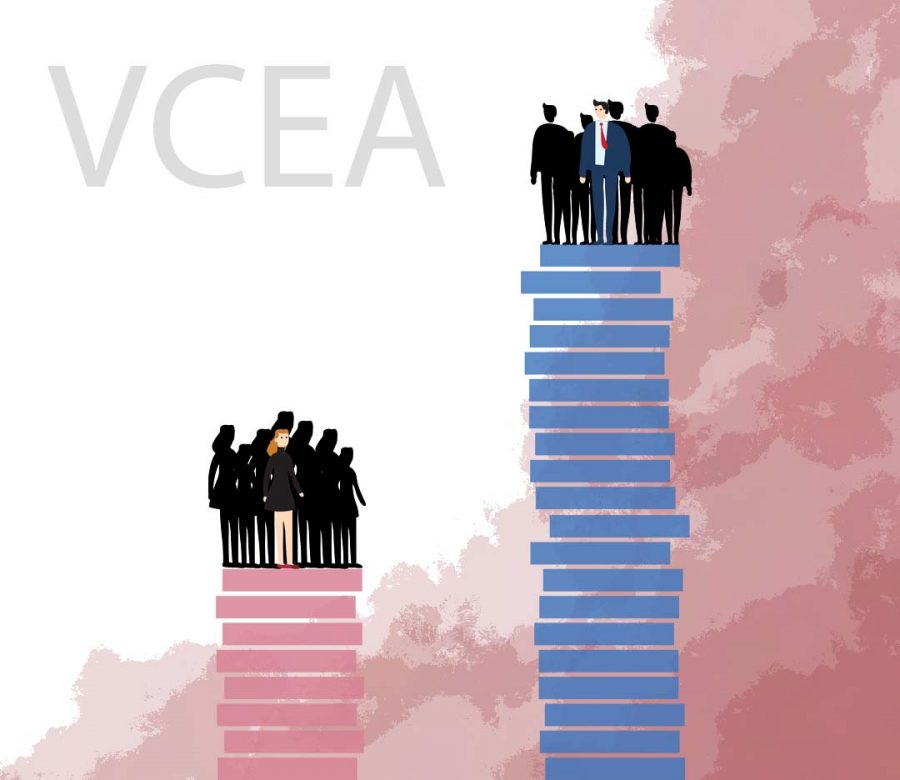WSU needs more female faculty in STEM
Lack of female professors perpetuates stereotype that STEM only for men
Women comprise only 21 percent of full professors in science fields.
September 15, 2021
Women represent 52 percent of the college-educated workforce but only 29 percent of the science and engineering workforce.
The situation worsens in academia. Especially in STEM, where women are significantly underrepresented. Women make up 34.5 percent of STEM faculty at academic institutions and women of color only make up less than 2 percent, according to National Science Foundation statistics from 2019.
This disparity increases at higher levels of academia where women only make up 28.2 percent of tenured STEM faculty and women of color under 1.4 percent.
At WSU, the number of women STEM faculties has remained under 21 percent. The numbers are significantly low in certain departments of STEM – especially computer science, math and engineering.
It comes down to a couple things when we talk about the number of female faculties in STEM, especially VCEA, Shelley Pressley, WSU Voiland College of Engineering and Architecture associate dean said.
First, how broadly we advertise the position is critical when we search for faculty. Second, there is a constant flow of people going through their master’s, doctorates, postdocs, getting the experience, being ready and then being on the market for a faculty position.
Women and underrepresented minorities are lost every step of the way. That unfortunately results in a decreased applicant pool.
“This eventually results in a decreased number of women that can actually make it to the top three candidates because there’s just not so many females in the applicant pool,” Pressley.
To address this issue at the faculty level, having well-thought-out hiring and interview procedures is key.
“Each of the search committees get some training and get talked to about diversity and inclusion — that’s a university requirement. We also have workshops on how we can attract more women into this pipeline,” said David Field, WSU Research and Graduate Studies associate dean.
Both Field and Pressley talked about several new search committee trainings conducted by the WSU Office of the Provost that address implicit bias and anti-racism in hiring.
“When Candis Claiborn was here as our dean, she got funding from the NSF for the Advance Program, and I was part of that early on,” Pressley said. “We have Dean Mary Rezac now, who is also very passionate about this, and since she’s been here, we have now institutionalized other programs that are very supportive for faculties, especially underrepresented minority faculty.”
The WSU Advance Program provides funding for the external mentor program, travel assistance program and the transitions program. This helps underrepresented faculty feel like they have more support and opportunities to help develop their professionalism and career.
Field said WSU has improved a lot in terms of family-friendly policies – such as accommodation for spouses and childcare benefits through advanced grants – though it is a self-funded effort by the university to support and retain female faculty members.
However, the major issues lie here — over 70 percent of women in STEM regularly report experiencing microaggressions and biases where they had their judgment questioned in their area of expertise, had to provide more evidence of competence than their peers, and have had their accomplishments or ideas credited to someone else according to this 2019 AWIS Report.
“At WSU to deal with such issues, we have the Association for Faculty Women university-wide — this has been a phenomenal resource personally for me, Pressley said.
AFW establishes a platform to discuss and address these issues through workshops, trainings and webinars.
“I definitely give them kudos for putting together great programming and opportunities to discuss these issues,” Pressley said.
The Advance program at WSU, together with the Office of the Provost and AFW, provides a really valuable opportunity to work with a team of staff. They provide a space to talk about these issues and develop ways that they can be more inclusive for both students and faculty.
“It’s a learning process – I recognize that – and it’s going to take time but we’re starting to take the steps,” Pressley said.
WSU, especially VCEA, is making a lot of effort to cast a broader and inclusive net to hire underrepresented faculty and has established programs to support and retain women in the faculty programs.
However, the efforts are not very significant if we are talking numbers. Faculty women in engineering at WSU still represent under 20 percent of the overall workforce.
In order to increase the number of women in STEM, women need to know that there is a clear place for them in colleges and careers. They should not be expected to endure harassment and have their abilities and qualifications constantly questioned.
Women need to stay in STEM because of the program’s inclusivity, not in spite of discrimination.









